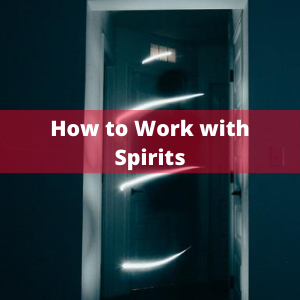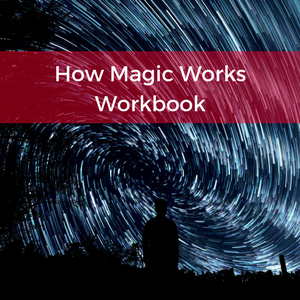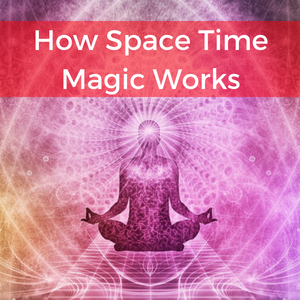I recently finished reading Joseph Lisiewski’s Howlings from the Pit (Affiliate link), which is a collection of essays about grimoire magic and of curse his particular argument as to why you have to do spirit work with daemons in a specific way. I don’t agree with Lisieswki’s approach and I’ve gotten efficacious results through my own system of spirit work, but I do think he makes some interesting points that are worth considering, both in regards to spirit work and magical work in general.
Point 1: You have to honor the original religious/spiritual belief system you were raised with - Lisiewski makes the argument that if you were raised in a different religious/spiritual system than the current religfious/spiritual system you are in, and you want to do spirit work, you have to honor original religious/spiritual system at least once or twice a year. I disagree with the author on this limited belief and think it speaks more to his religious/spiritual issues than being an actual and effective axiom.
I was raised episcopalian and was a born again Christian for a time and I never found that I needed to go to a sermon or make some kind of offering at a church in order to do effective spirit work. When a person makes a rule or axiom around any magical work, we ought to carefully consider the subjective nature of such rules. What works for one person may not work for another and may not even be relevant.
Point 2: If you put your power in magical tools this takes away from the power you bring to rituals. - This is an interesting argument that I find myself agreeing with in some ways. Lisiewski is specifically referring to the creation of tools for the Golden Dawn rituals and how part of that process involves embedding your personal energy within those tools, which ends up taking away from the efficacy of your work with other magical systems.
I do think its possible to invest a lot of yourself into a given magical tool, which is one reason I recommend not relying on any given magical tool too much. A magical tool is meant to be an aid and representation of something you are working with. It can help you access certain frames of mind and being, but it should never be something you rely upon so much that you can’t do anything without it.
Point 3: If you don’t do the magical working the right way, you can suffer adverse effects (aka his slingshot method). I don’t think there’s a right or wrong way to do magic, but you can definitely tell if a given process or methodology is working by the results that are being generated with that process. Keeping careful track of the results, consequences, and adverse effects that come with magical work is a good idea because it helps you recognize what is working or what can be improved upon.
Sometimes you will experience adverse effects with magical work. These may show up as synchronicities indicating the confluence of possibilities lining up to manifest the result or spiritual forces showing up to help or hinder the work involved. The key is not read too much into anything, and continue doing the work until you’ve finished the operation.
Point 4: Your psychological, spiritual, ideological values play a role in your magical work. This point is a bit similar to point 1, but also distinct. What we believe and think about ourselves, other people, and the world around us plays a role in the magical work we do. It’s important to acknowledge the internal reality and the role it plays in our magical work. In my own experience the majority of the time a magical working doesn’t work is because of the internal reality of a person and what is out of alignment with that internal reality and the desired result the person is going for.
Point 5: You have to do specific activities at specific times with specific items. Ironically, one of the points the author made in contradiction to point 2 was that you need to use certain items at certain times in order to get results. I won’t argue that a given system of magic may speak to specific necessities around magical tools, times, etc., but what I find personally powerful about magic is that you can come up with your own systems and processes and get results that are consistent and powerful. You can also do this with a pre-existing system, but you do operate within the constraints of that system. Either way can work, but its important to figure out what works for you. The beauty of magic is that it provides a versatility that can be explored and experimented with, provided we’re willing to question the underlying narrative that magic has to be done a specific way in order to be effective.

















